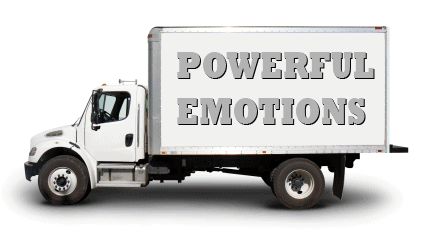Welcome to part number four of The Procrastination Series! For those who may have missed the previous parts, or if you'd simply like a refresher, read on:
In the first part, we went over five different types of procrastination and we've tried to identify which one we are so that we could find strategies to stop procrastinating depending on which type of procrastinator we are. Catch up HERE.
In the second part, we talked about the first type of procrastination, the fun procrastination. People that are fun procrastinators often choose something that is exciting over something that's boring. Catch up HERE.
Last week for the third part, we talked about the second type of procrastination, the distraction procrastination. This one is about all of the external stimuli who attack us and make us choose to do something different because they grab our attention and fight for it. Catch up HERE.
Today is one of the most popular types of procrastination, the anxious procrastination. People that are anxious procrastinators often choose to put a task aside because it scares them. Are there any tasks that you don't want to do sometimes? You look at your computer and you're scared. You think: "Oh, I don't want to do that. I don't know how to do that. There's no way I can do this. I'm uncomfortable. This is not happening." This is enough to keep you from doing that thing and choose to procrastinate instead, right? Watch the video or read the full blog below for more...
The first thing we need to understand is that procrastination happens in our brain, especially the anxious procrastination type. It seems that with this type of procrastination, it's an emotion control regulation problem. When we cannot control an overwhelming emotion, procrastination becomes a coping mechanism, right? If a task that we don't want to do causes anxiety, procrastination becomes the coping mechanism that keep us from feeling this anxiety.
The executive brain function that is associated with anxious procrastination is the inhibitory control. Last week, we talked about cognitive inhibition, which is a little bit different. Cognitive inhibition is about outside stimuli that create a distraction. In this case, inhibitory control is about controlling the emotions that are happening inside us. It's the cognitive process to inhibit our impulses and inhibit our dominant behaviors. In other words, it's our self-control. It's the way we can control our emotions.

All emotions are created equally in our prefrontal cortex. When we become overwhelmed, when we are scared or afraid or anxious about something, we go into what we call a prefrontal cortex overload. You might have seen people get overwhelmed and grab their head. This is because it really is happening right there, in the front part of the head.
I have a few solutions for you.

#1: UNDERSTAND WHERE THEY COME FROM
Understand that these emotions are all created equally, in the prefrontal cortex. Your brain doesn't know the difference between anxiety or excitement. They're all powerful emotions. I never identify an emotion as being negative or positive. They are all powerful and they are all equal. If you decide that the emotion that you're feeling is negative, then more likely, your brain will shoot 1400 chemicals through your bloodstream that will slow you down, like cortisol. You're familiar with this. If you choose that what you're feeling is excitement, your brain will send a feel-good chemical in your bloodstream so that you start being excited and you have energy to face the task ahead of you.

#2: GRAB THE PACKAGE
These emotions are powerful, and they're like a delivery truck that is in your driveway. Every time you feel uncomfortable with a task, visualize that you have a truck in your driveway, and all you have to do is open the door and grab the package. There's a full blog about these powerful emotions that I recorded at the beginning of the pandemic. You can click HERE to have access to that full blog. So there's a truck in your driveway. It has a parcel for you, but the problem is usually, we don't have time to open the package, and we pretend that it's not there. We move on with our life and we pretend that everything is okay because you're in front of your coworkers, for example, and then you go home and your daughter asks: "Are you okay, mommy?" "Oh yeah, Mommy's fine. Everything's good." We don't take the time to say: "Hey, I'm feeling like this. What does that mean for me?"
You have to collect the package because as soon as it's delivered, the truck's going to go away and leave your driveway. The problem is that a lot of people don't take the time to do it. How do you do this specifically? You ask yourself: "What am I learning? What positive learning is in this parcel?" You have to open the door and acknowledge that there's a truck in your driveway. Find out what is this positive learning that's waiting for you in the parcel. If you don't open the door for the delivery truck, it's going to stay there and wait and idle until you open it. And then another truck will come in, and then another truck will come in, and another truck will come in... And before you know it, your whole driveway is filled with delivery trucks, and you're stuck. You can't go anywhere.
Understand that when you feel uncomfortable with a powerful emotion, you need to figure out what it is that you are learning. In order to be able to do that, you have to take a step back.

#3: BREATHE AND THINK BACK
Every single time you're about to do a task that stresses you out, calm yourself down. Take a deep breath and relax so that you have access to your full brain. This way, you will re-oxygen your brain, you will calm yourself down and you might be able to find that positive learning faster once you're calm. The other thing you can do is as you breathe, think of all the other times you've learned something. The first time that you tried to join a Zoom meeting, for example. You were probably very uncomfortable and didn't quite know how to do it, but now it's easy, right? Remember some of the old tasks that you were not comfortable with, but are now. Make a “have-done” list. What have you become good at in the past? Celebrate those successes and think: "Yay, I'm awesome. I'm able to learn this. That means I'm good at learning. I can learn again."

#4: WHAT DO YOU WANT?
The last solution is figuring out what it is that you want. Focus on what you want, not what you don't want. When you feel overwhelmed, when you feel yourself going into prefrontal cortex overload and are about to push a task aside that you're uncomfortable with, ask yourself: "Okay, what do I want?" Not what you don't want. Very often, we say: "Oh, I don't want to be stressed. I don't want to rush everywhere. I don't want to be impatient. I don't want to be broke. I don't want to..." We say what we don't want. Say what you want instead! "I want to finish this task." Because really, it's a weight on your shoulders, it's there and it's staying on your to-do list even if you keep pushing it away. Figure out what you want and visualize yourself having done the task and being proud of yourself.
Next week, we'll be going over the next type of procrastination, the organizational procrastination. Because sometimes, it's not that we are anxious about something. It's just that we don't know where to start. It seems like the task is way too big. See you then!

DO YOU WORK WITH CLIENTS THAT ARE STRESSED?
Would you like to help them control their emotions and regain their full potential? Do you sometimes feel like an underpaid therapist as you are helping everyone around you and you would like to get more specific tools and strategies to better help them? Become a certified Life Coach. Check out the THINK Yourself® A COACH Online Coaching Certification that you can do at your own pace HERE.
Want more? Check out the other part in this series...







